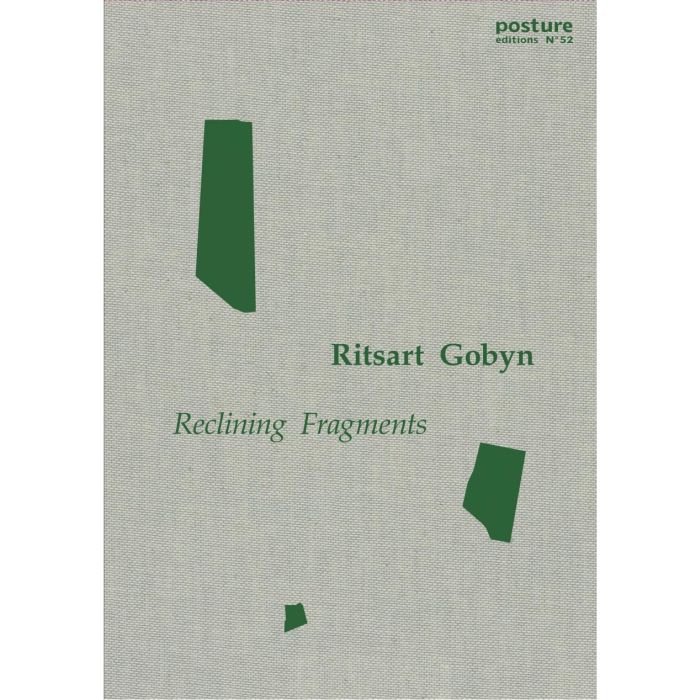My Cart
Your cart is empty
Looks like you haven't made your choice yet.
- Subtotal
Posture 52: Reclining Fragments

Ritsart Gobyn
- Posture Editions
- Maarten Inghels
More Information
| Publisher | Posture Editions |
|---|---|
| ISBN | 9789491262579 |
| Author(s) | Maarten Inghels |
| Publication date | June 2023 |
| Edition | Hardback |
| Dimensions | 297 x 210 mm |
| Pages | 240 |
| Language(s) | Eng/ NL ed. |
| extra information | Book launch: 18/6/2023 Plus-One gallery |
Description
Reclining Fragments, Ritsart Gobyn’s second book is the sequel to In Between and, as if by some miracle, thus completes the sentence: ‘In Between Reclining Fragments’.
Where In Between still hesitated between indicating place or time, the complete sentence ‘In Between Reclining Fragments’ seems to indicate a place: somewhere between reclining fragments.
But in the conversation between Ritsart and Maarten Inghels – the author of the text accompanying the book – it is again emphatically about time: “‘As you move closer and distance yourself again, a passage of time is created,’ you said. ‘That back-and-forth movement of your perception makes it interesting.’”
The book forms the second volume on the artist’s work and contains almost all the works the artist made from late 2020 to mid-2023, including the room views of ‘Prologue’, the exhibition at PLUS-ONE gallery, where the book will be introduced. Consistently, Ritsart continues to build an evocative and tactile oeuvre in which he increasingly challenges the viewer’s perception and causes the gaze to slow down.
More than in the first book – with works from 2017 to 2020 – the artist incorporates fragments/citations of other artists into his paintings, raising the question of what motivations preceded that choice. Does Ritsart neutralise the works of grandmasters by painting them alongside tape, paper scraps and dirty footprints, or does he instead pay homage to his pictorial heroes?
Is there a truth to be found here, somewhere among the backward sloping scraps?

Posture 52: Reclining Fragments
